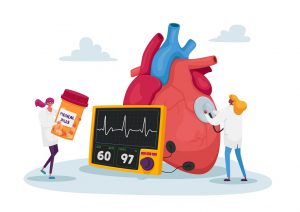 Cholesterol can get a little bit confusing. It’s one of those things that can be good and bad, and it’s not always exactly what you think it is.
Cholesterol can get a little bit confusing. It’s one of those things that can be good and bad, and it’s not always exactly what you think it is.
That matters a lot for your health. Cholesterol plays some very important roles in your overall health, both positively and negatively. On one hand, it can lead to high blood pressure and heart disease. On the other, it can help your heart and other important metabolic processes.
Advertisement
So, here are three things to remember about cholesterol.
1) Cholesterol is not all the same. At its simplest, there are two types of cholesterol in your bloodstream: high-density lipoprotein (HDL), and low-density lipoprotein (LDL). HDL is commonly referred to as “good,” while LDL is known as “bad” cholesterol.
HDL gets a good rep because it helps clean up dense artery-blocking deposits of LDL. It encourages better blood flow and may help manage inflammation. It’s typically created with a healthful diet.
LDL isn’t quite as simple. There are a variety of types of LDL, and they are not always well understood. One type is associated with negative health impacts. These are small, dense particles that accumulate along arterial walls. Think of them as little pebbles.
Other forms of LDL are fluffy and move around the body freely. They may not have many benefits, but they are not bad either.
Harmful LDL is typically created by high amounts of sugar.
2) Dietary cholesterol doesn’t necessarily do what you think it does. Some foods, like eggs and beef, are known as high-cholesterol foods. But that doesn’t necessarily mean they are bad for you.
Steak, for example, can lead to LDL creation, but not the “bad” high-density stuff. It can create a fluffy type of LDL that is not harmful. The same thing with eggs: the cholesterol they create is both good and neutral.
On the other hand, sugary and highly processed foods can lead to “bad” high-density forms of LDL.
Advertisement
3) You can use cholesterol to improve cholesterol. Because HDL cholesterol is associated with health benefits and is known as a “negative risk factor” (which means it’s good) for heart disease, eating more of it can make you healthier.
Further, it can act like a vacuum cleaner to clear away dense LDL deposits from arterial walls.
Those are a few important aspects of cholesterol that are worth remembering and can help you understand how it works.
